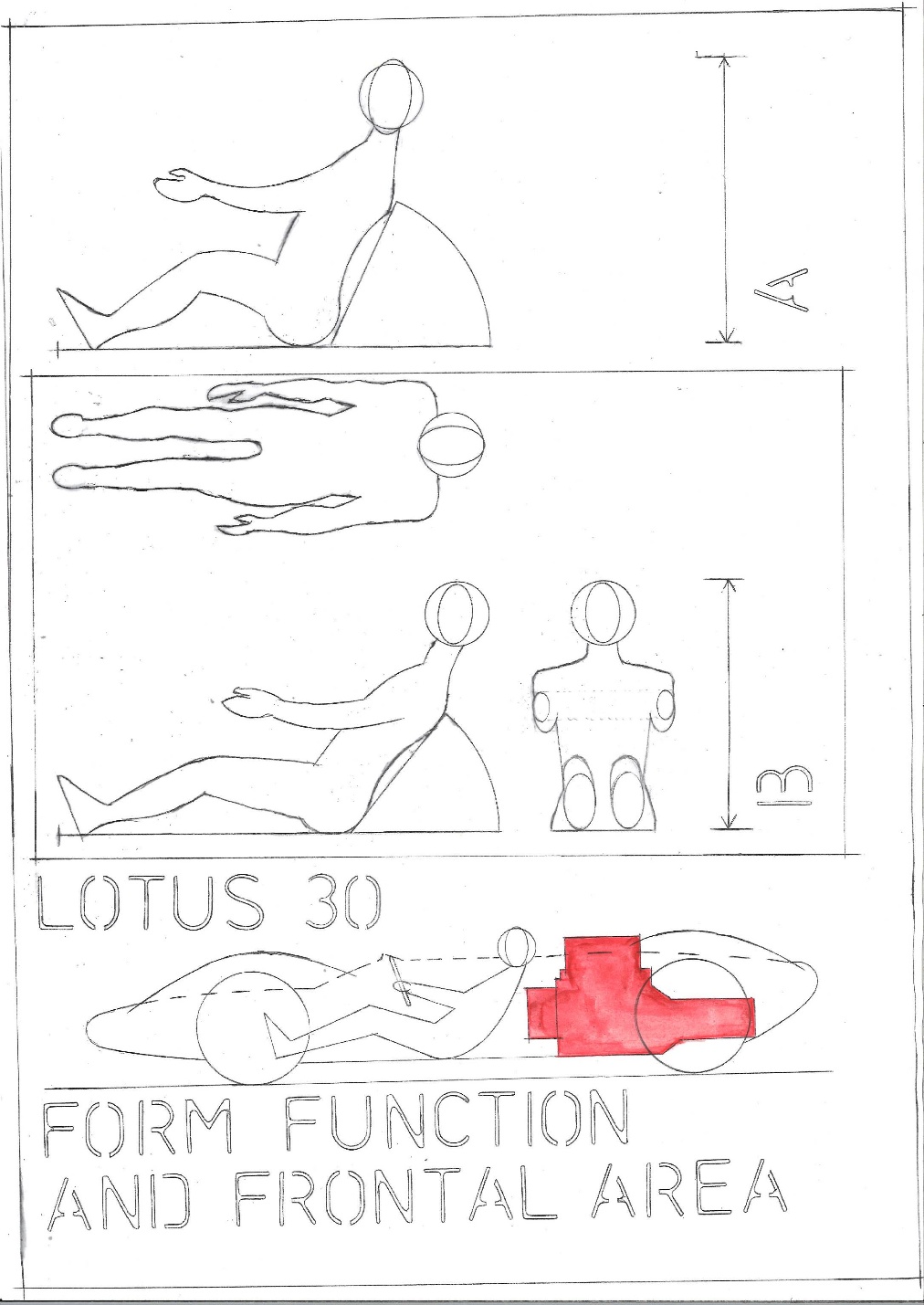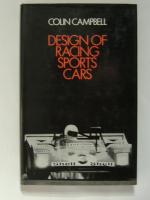If so inclined: Form, function …………and frontal area; Chapman’s laid back approach.
Introduction
This article is fundamentally about:-
- The Lotus 30 and the proposed GT Coupe family of Lotus cars that might have grown out of the Ford/Le Mans project and Chapman’s dealings with Ford
- Chapman’s primary objectives and the overlaps that existed between Lotus as manufacturer/entrepeneur,collaborator/ consultant and competitor
- Equally it suggest that Chapman as owner/boss was capable of forcing through policies that were often rushed, ill-considered and underfunded /developed
- It also touches tangentially important aspects of Lotus history including Can-Am
- A tool to help analyses aesthetics as determined by form and function
This too was the era when a new breed of muscle/pony cars were designed and built in America, Europe and Britain. Many of which adopted the Ford small –block V8 engine.
Particularity useful in constructing this article are the books on Colin Chapman/Lotus by Haskell and Ludvigsen.
Subscribers might find A&R articles useful and complementing this piece:
- Lotus Chassis Development
- Lotus 30 &40
- Ford engines and the Good Ford blessed
- The Ford Fairlane V8 engine
- Pieces of Eight: Lotus and V8 engines
The Ford GT 40 and Fords contract to develop a car for Le Mans
In our structured set of three articles relating to Ford V8 engines and in previous dedicated pieces we have explored Ford’s Total Performance strategy in some depth.
It is material to this story and that of the proposed GT Coupe family of cars.We recommend this to subscribers for momentum, background and avoidance of repetition.
Chapman would have probably thought he was a natural choice of partner to Ford and their attack on Le Mans following the Indianapolis link-up and Ford’s commitment to Total Performance with a European perspective.
Our chronology below sets the time table.
| Month/season | Year | Developments |
| 1962 | Lotus launch mid engine & monocoque Type 25 | |
| Summer | 1962 | Ford re enter motor racing under “Total Performance” ? |
| July | 1962 | Chapman& Ford contract on Indianapolis entry for 1963 using Ford V8 |
| January | 1963 | Broadley displays the Lola Mk 6 GT at London Racing car show |
| [note development time and negotiation of Ford V8 engine] | ||
| 1963 | Ford are independently developing their own GT car for Le Mans | |
| 30th May | 1963 | Lotus Ford 2nd at Indianapolis with Jim Clark driving |
| June | 1963 | Lola Mk 6 GT runs at Le Mans |
| Summer | 1963 | Ford & Broadley contract to develop Le Mans contender |
| 3rd October | 1963 | Chapman lays down guide design for a “family” of cars to become type 30 |
| 1964 | Lotus type 30 shown at the London Racing car show | |
| April | 1964 | completion of first Ford GT 40 after 11 months work |
It can be understood why Chapman was disappointed to lose out.We postulate various explanations
- Ford were disappointed with the tyre issue at Indaniapolis and possibly Chapman’s fees
- That Broadley offered an immediate momentum with his Mk.6 GT that possible closely accorded with Ford’s thinking and constructional techniques
- Chapman might have indicated he saw a commercial opportunity for a family of cars, which on one hand may have benefited Ford as an engine suppliers but conflicted with their desire to exploit their own vehicle
- There may have been reservations about Lotus manufacturing capacity and or Chapman’s control over the project contrary to Ford strategy
The Ford GT 40 makes an interesting comparison with what might have been the Lotus GT Coupe .

Figure 1. Editors sketch of the Ford GT 40 coupe

Figure 2. Working drawing complementary with above
Chapman and Aerodynamic Principles
For a grasp of this subject we direct subscribers to Staniforth, Haskell & Ludvigsen.
Of immediate significance is a table constructed by Haskell illustrating how resistance varies with speed.
Ludvigsen reinforces the concept and how Chapman applied it.
He explains that in the Lotus 20 the seat squab sloped back at 50 degrees to the vertical “the result in the 20 was 30% less frontal area- a vast reduction in a low powered car for which it w\s instantly useful………….in the 25………..the slope was even steeper at 55 degrees”
Ludvigsen also provides a captioned drawing of the type 30 and we replicate this [see diagram below]
Staniforth: Learning Opportunities/applications
Subscribers are directed to Staniforth [see references below].He has used a diagram similar to that of our “B” below. In his sketch of a driver seen in side elevation .he notes “example dimensions for 5foot 8 inch driver [using datum’s of seat pad and rear of helmet radius”]. Onto this outline profile Staniforth annotates key dimensions.
He adds that “all driver –related dimensions are important, but three are vital and must fit your personal physique if you are to be fast and comfortable.”
Staniforth suggests 13 other critical measurements as seen again in side elevation
Subscribers are invited to
- investigate Staniforth’s book and recommendations or alternatively:
- deduct what these are and enumerate
- using template “B” to assist conceptualization and annotate accordingly
If there is sufficient interest the editors will develop the diagram and add the dimensions as seen in plan, front and side elevations.
Comparing and contrasting diagram “A” and “B” subscribers can contemplate the advantages, disadvantages, ergonomics and overall design impacts, tradeoffs and associated with differing driver inclinations. These are considerable and ripple through safety, vision, utility/ space availability, fuel economy, ease of egress and aesthetics etc.
Subscribers can copy both diagrams and apply their thinking and note interactions as this level of engineering design is holistic. Alternatively the purchase of an artist’s type mannequin provides further permutations and 3D aspects not so easily seen in 2D diagram form.

Figure 3Editors sketches from Staniforth and Lotus published sources outlining the impact of driver inclination
One of the most important learning opportunities relates to Chapman design methodology. This can been seen both in the evolution of his experience, through theoretical principles and onto commercial opportunities.
The editors recommend that subscribers progress from this understanding and interpretation to examine in particular the Lotus Europa, the Esprit and onto the Elise.
Seating inclination has a dramatic impact on automobile aesthetics; associated with mid/rear engine installation it dramatically transforms the canon and essential proportions; a new design language results reflecting form and function. Primarily inclined seating position lowers overall height including and frontal treatment [mid/rear engine installation].Subscribers are invited to study the aesthetics of Lamborghini as an example.

Figure 4. Editors working drawing of the Lotus 30
The Lotus 30 GT Coupe Concept
Caption to drawing:-
“Colin Chapman was rather angry that Ford, with whom he was already closely associated, had chosen Lola for their Le Mans project. This was particularly so, because at the same time he was introducing his type 30 sports car and no doubt when he designed this coupe version of it [which was never built],he thought about a possible return to Le Mans to try and beat the Ford-Lola “
Ludvigsen particularly outlines the evolution and thought train and we recommend this is studied.
The editor makes an extrapolation of how the GT Coupe might have looked with road going fixtures adopted.

Figure 5.Editors sketches extrapolated from Chapman’s drawings and colleagues for GT Coupe family of cars

Figure 6. Complementary with above and an attempt to incorporate road going features into the design
Learning Opportunities
Our learning /educational opportunities are intended to be challenging thought provoking and requiring additional research and/or analysis.
These opportunities are particularly designed for a museum/education centre location where visitors would be able to enjoy access to all the structured resources available in conjunction with any concurrent exhibition.
In this instance we suggest the following might be appropriate:-
- Which famous Sports racing cars have either been converted or productionised for road use? With what motive?
- Suggest an in period marketing strategy for the proposed Lotus GT Coupe family of cars
- Compare and contrast the aesthetic of the GT Coupe with that of the Europa and the mid-engine V8 cars of the 1960’[ see contrasts in Appendix below]
Exhibitions, Education and Economics
In the museum context the editors believe that commercial considerations are both necessary and complementary with its educational objectives.
For these reasons our suggested outline Business Plan includes provision for promoting products and services which share Chapman’s ideals of mechanical efficiency and sustainability. In addition we propose merchandising that explain and interprets the social and cultural context of Chapman’s designs in period. It’s suggested there will be catalogue for on line purchasing.
In this instance we suggest the following might be appropriate:-
- Chapman’s Inclination: the Learning Slope
- Chapman’s Slant
- Chapman and the Inclined Plane
- Ergonomics and Inclination
Conclusion
The development of the Lotus 30 is informative.
An outline drawing by Chapman in October 1963 sees a car displayed at the London Racing Car Show in early 1964.
What might be deducted is:-
- The car was rushed although pushing the envelope with an urgency to demonstrate capacity and discipline to both Ford & Lola
- To meet deadlines and related objectives short & long term the backbone chassis was adopted
- The short time frame , winter months, lack of budget probably precluded serious testing and development
As a consequence the Type 30 suffered serious flaws; including chassis flexing, breaking issues of the discs within the 13 inch wheels [which was possibly a function of attempting to reduce frontal area along with the inclined driver position].These were possibly a direct result of over emphasis on certain aspects of the design as opposed to a holistic resolution.
It’s rather interesting that Broadley did not fully exploit the Ford contract with a road car but produced the type 70.
Whereas Ford enjoyed enormous success with their GT 40 delivering Total Performance and a road going version.
Chapman and his team including Hickman and Frayling went on to develop and manufactured the Europa and built the one-off GKN/Rover V8 type 47.
We have stated on many occasions Chapman made mistakes possibly more accurately a miscalculation.The type 30 was one.Under different circumstances it might have been one of the significant super cars of these 1960’s.
A notable lesson is that Chapman was the owner with the power to enforce his will, but within management and ownership there is a need to blend power with responsibility.
Commercial survival is at stake.
Appendix 1 Mid engine car aesthetic contrast

Figure 7. Editors sketch working drawing of the GKN/Rover V8

Figure 8.Editors sketch working drawing of the Lola Type 70 –a successful car in Can Am and sports racing /endurance events
Reference:
Race and Rally Car Source Book.Staniforth.Haynes.1997.
ISBN: 085429984x

Design of Racing Sports Cars.Campbell.Chapman Hall.1973.
ISBN: 0412118807
Sports Car: Design and Development.Campbell.Chapman Hall.1978
ISBN: 041215000x
Lotus: A competition survey.Harvey.Osprey.1999.
ISBN:1903088011
Racing Car Design and Development. Terry & Baker. Motor Racing Pub’.1973.
ISBN: 0900549203
Racing &Sports Car Chassis Design.Costin & Phipps.Batsford.1974.
Sports Car Bodywork.Locke.Batsford.1960.
The Lotus Book.Taylor, Coterie Press.
Colin Chapman: Lotus Engineering.Haskell.Osprey.1993.
ISBN: 1855323761
Colin Chapman.Ludvigsen.Haynes.2010.
ISBN: 9781844254142
Please note the editors of the A&R attempt to give the broadest spectrum of references but not all are available for consultation in an article. However by noting their existence it may assist students in their research.
*Items in italics non A&R library books.